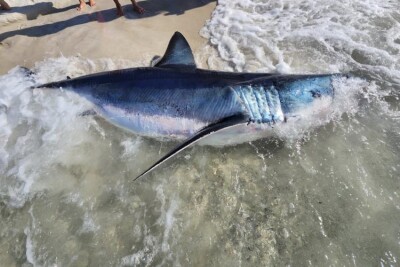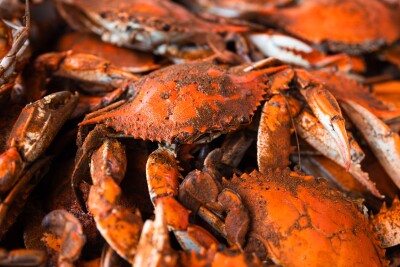Staying afloat saves maintenance costs, vessels and lives
Based on U.S. Coast Guard reports
On Dec. 3, 2003, a 71-foot, wooden-hulled fishing vessel out of Scranton, N.C., was transiting from the Atlantic Ocean into Oregon Inlet Channel when the vessel began to take on water from a busted plank in the port bow, which had not been maintained properly.
The master requested Coast Guard assistance and intentionally ran aground near the junction buoy in Old House Channel. Coast Guard Station Oregon Inlet provided pumps to assist with the flood control. The crew made some temporary repairs and refloated the vessel in an effort to dock in Wanchese, N.C.
During the transit through Hells Gate, flooding became uncontrollable, and the master again intentionally ran the vessel aground just out of the channel, near Buoy 43. The vessel listed to starboard after running aground, and the master and crew disembarked with Coast Guard assistance.
Marine Safety Team Elizabeth City investigators met with the master and crew of the vessel at the Oregon Inlet station. Investigators interviewed the master and crew, gathered statements, issued a Notice of Federal Interest and began to coordinate the vessel's salvage operation for the next day. There were no reported injuries. The master stated that approximately 1,000 gallons of diesel fuel was still on the vessel, 500 gallons in each of the port and starboard fuel tanks.
A salvage plan was developed, and the vessel was refloated around noon on Dec. 4, 2003. Between the vessel's second grounding on Dec. 3 and the completion of the salvage operation the next day, approximately 499 gallons of diesel fuel discharged from the starboard side fuel tank into the surrounding waterway of Oregon Inlet. The discharge occurred as a result of the vessel's listing to starboard after running aground and having the starboard gunwale sink beneath water level.
Incident 2
Mid-afternoon on March 29, 2003, while underway approximately 26 nm east of Cape Ann, the shaft sheared off a 27-foot, fiberglass fishing vessel out of Gloucester, Mass., rendering the vessel unmaneuverable and allowing seawater to enter the vessel's bilge. The owner/operator of the vessel notified the Coast Guard by VHF radio Channel 16 that they were taking on water.
Coast Guard Station Gloucester dispatched a 41-foot vessel to assist. Fortunately, the fishing vessel's bilge pumps were able to keep up with the flooding. The Coast Guard towed the vessel back to Gloucester Harbor safely. No injuries or pollution were reported.
Follow-up investigation revealed that the shaft sheared off approximately 6 inches below the transmission as a result of wear and tear. The vessel was 23 years old. There was no evidence of any mechanical or structural failure that would have caused the shaft to shear off. The vessel was hauled out of the water at Roses Marine for permanent repairs.
Lessons learned
These two incidents are different in all aspects — geographic region, vessel length and hull material. While these attributes are significant causal factors that generally influence a casualty, there is a common factor that led to the vessel's sinking in these incidents. The lack of maintenance of these vessels allowed them to deteriorate to a point that failure occurred, which led to environmental pollution, use of Coast Guard assets and extensive vessel repairs.
The leading cause of fatalities in the commercial fishing industry is loss of the vessel. From 1994 through 2004, 1,398 vessels were lost. Of those vessels, more than 80 percent did not have a voluntary dockside examination decal.
Recent investigation has uncovered that accident rates increase with fishing vessel length, showing the strongest concentration of vessel losses in the 60- to 70-foot range. While a variety of factors could influence this increase in accident rates, the likely explanation is larger vessels generally are capable of operating farther from shore, with the potential for longer voyages or exposure to more severe environmental conditions. Other similarities, such as vessel age and hull material, are shared among those vessels that are lost.
Fishing vessel losses occurred predominately within the vessel age range of 21 to 40 years. This age group accounted for 672 (59 percent) of fishing vessel losses. Vessels made of wood, followed by steel-hulled vessels, sustained the greatest loss over this period. Surprisingly, findings show that 616 (44 percent) of the fishing vessel losses occurred while in transit (non-fishing mode), as was the case with these two incidents.
Vessel flooding contributed to 35 percent of the vessel losses from 1994 to 2004. The major causes leading to flooding were broken down into five categories: hull/machinery failure, weather, human factors, external fault, and unknown. Hull/machinery failure accounted for 69 percent of the fishing vessel losses caused by flooding and 25 percent of all casualties involving fishing vessel loss for this period.
The majority of lives lost (51 percent) in commercial fishing industry vessels are directly attributed to loss of the vessel. The best way to prevent fatalities is to prevent vessel losses. Routine preventive maintenance and periodic examinations can reduce vessel losses and fatalities.
The Coast Guard's no-fault, voluntary dockside examination program continues to be our most effective outreach component. These exams raise awareness of vessel watertight integrity, stability and maintenance issues that can lead to vessel loss. Issues identified during exams are not reported for law enforcement action but are used to help fishermen improve the safety of their vessels. Call (800) 368-5647 to schedule a free dockside examination or visit a local Coast Guard examiner. More information on voluntary dockside examinations can also be found at www.fishsafe.info.






